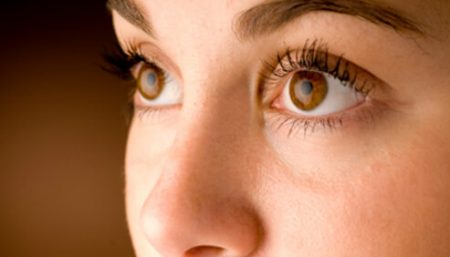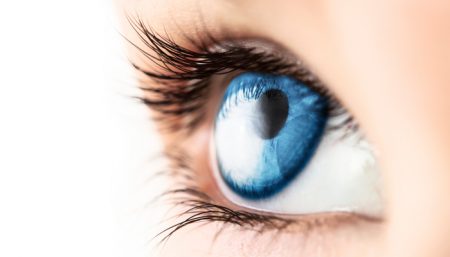
Allergists define allergy as a reaction of the body’s immune system that take place after the body becomes sensitized to a substance (allergen), usually a protein. Allergic reactions result when allergy-causing proteins combine with antibodies to trigger the release of histamine and other chemicals that can cause skin rashes and various other symptoms
Types of Allergy
Allergies come in a wide variety. They are often classified according to where they produce symptoms: skin, respiratory tract (nose, lungs). Or their causes: insect stings, foods, medicines.
- Respiratory
- Allergies to insect stings
- Skin Allergies
- Food Allergies
- Allergies to medicine
Causes of Allergy
There is a genetic component to most allergies, which means allergies are hereditary and passed to children from their parents. The child inherits the tendency to be allergic, but not to any specific allergen. If a child develops an allergy, it is likely that at least one parent of the child also has allergies. Another risk factor that appears to contribute to the development of allergy is the act of being exposed to allergens at certain times when the body’s defenses are low or weak, such as after a viral infection or during pregnancy.
The substances that cause allergic disease are known as allergens. They enter our bodies in a variety of ways:
- Inhaled into the nose and the lungs: Examples are: airborne pollens of certain trees, grasses and weeds, dust mite droppings, mould spores, cat and dog dander
- Ingested by mouth: These are generally the things that we eat and drink, including prawns and peanuts
- Injected: Such as reactions to stinging insects and injectable drugs
- Absorbed through the skin: Things we come into contact with: poison ivy, oak and cosmetics
The normal reaction of our body to invasion by foreign substances is to defend itself. This is the role of our immune system.
To find the cause of an allergy, needs considerable diagnostic skills, otherwise a lot of money and time can be spent looking in the wrong direction before you get to the correct answer.

Symptoms of Allergy
When an allergen enters the body of a person with a sensitized immune system, histamine and other chemicals are released by certain cells. This causes itching, swelling, mucus production, muscle spasms, hives, rashes, and other symptoms.
There is no single allergy symptom, they vary with the source and type of allergy.
Symptoms can include:
- runny nose
- tearing eyes, burning or itching eyes
- red eyes, conjunctivitis
- swollen eyes
- itching nose, mouth, throat, skin, or any other area
- wheezing
- coughing
- difficulty breathing
- hives (skin wheals)
- skin rashes
- stomach cramps
- vomiting
- diarrhea
- headache
How is allergy diagnosed or evaluated?
A carefully obtained patient history, including environmental exposures, and the appropriate laboratory tests or allergen challenges is critical for the accurate diagnosis of allergy.
Tests that may reveal the specific allergens include:

- Skin testing — the most common method of allergy testing. This may include intradermal, scratch, patch, or other tests. Skin testing may even be an option for young children and infants, depending on the circumstances.
- Blood test — also called RAST (radioallergosorbent), this measures the levels of allergy antibody, IgE, produced when your blood is mixed with a series of allergens in a laboratory. If you are allergic to a substance, the IgE levels may increase in the blood sample. The blood test may be used if you have existing skin problems like eczema,, if you’re on medications that are long-acting or you cannot stop taking, if you have a history of anaphylaxis, or if you prefer not to have a skin test.
- “Use” or “elimination” tests — suspected items are eliminated and/or introduced while the person is observed for response to the substance. This is often used to check for food or medication allergies.
- Eyelid — Occasionally, the suspected allergen is dissolved and dropped onto the lining of the lower eyelid (conjunctiva) as a means of testing for allergies. (This test should only be done by a physician, never the patient, since it can be harmful if done improperly.)
- Reaction to physical stimuli — application of heat, cold, or other stimulation, and then look for an allergic response.

Other tests that may reveal allergies include:
- Antibody/immunoglobulin (particularly IgE) levels — when these are elevated, it indicates a “primed” immune system.
- Complete Blood Count (CBC) — may reveal an increase in eosinophils. The results can reflect problems with fluid volume (such as dehydration) or loss of blood. It can show abnormalities in the production, life span, and rate of destruction of blood cells. It can reflect acute or chronic infection, allergies, and problems with clotting.
- Complement levels — may be abnormal.
Treatment
There are three techniques commonly offered by doctors to help allergy sufferers:
- Avoidance
- Medication
- Immunotherapy
Many allergens, once identified, can simply be avoided. If you know you’re allergic to shellfish, you don’t eat it. Pet allergies can be handled sometimes by keeping the pet outside.
Unfortunately, many allergens — like pollen, mold and dust — are very difficult, if not impossible, to avoid. These can often be managed by using medications such as antihistamines, decongestants, cromolyn sodium, corticosteroids and, in the case of anaphylaxis, epinephrine.

Medications that can be used to treat allergies include the following:
- Short-acting antihistamines, which are generally non-prescription, often relieve mild to moderate symptoms but can cause drowsiness. In addition, these antihistamines can blunt learning in children (even in the absence of drowsiness). An example is diphenhydramine. One formerly prescription medication, loratadine (Claritin), is now available over the counter. It does NOT tend to cause drowsiness or affect learning in children.
- Longer-acting antihistamines cause less drowsiness and can be equally effective, and usually do not interfere with learning. These medications, which require a prescription, include fexofenadine (Allegra) and cetirizine (Zyrtec).
- Nasal corticosteroid sprays are very effective and safe for people with symptoms not relieved by antihistamines alone. These prescription medications include fluticasone (Flonase), mometasone (Nasonex), and triamcinolone (Nasacort AQ).
- Decongestants may also be helpful in reducing symptoms such as nasal congestion. Nasal spray decongestants should not be used for more than several days, because they can cause a “rebound” effect and make the congestion worse. Decongestants in pill form do not cause this effect.
- Cromolyn sodium is available as a nasal spray (Nasalcrom) for treating hay fever. Eye drop versions of cromolyn sodium and antihistamines are available for itchy, bloodshot eyes.
Leukotriene inhibitors — montelukast (Singulair) is a prescription medicine approved to help control asthma and to help relieve the symptoms of seasonal allergies.
Immunotherapy is expensive, time consuming and not without risk. But it is often the only hope a person has for leading a normal life. It consists of a series of injections of the offending allergen, beginning with a very weak dilution and gradually building in strength to a maintenance dose that may be continued over time. The injections help the immune system to produce fewer IgE antibodies, while also stimulating the production of a blocking antibody called IgG. This works to varying degrees with many allergies, but some cannot be treated this way.
Disclaimer
The Content is not intended to be a substitute for professional medical advice, diagnosis, or treatment. Always seek the advice of your physician or other qualified health provider with any questions you may have regarding a medical condition.



